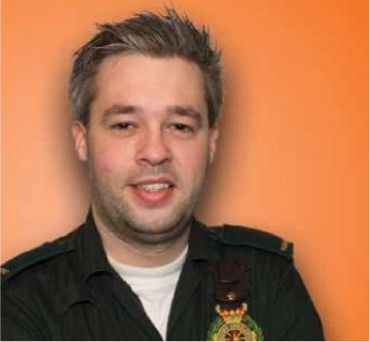
The term remote clinical decision-making (RCDM) refers to a clinician's role and responsibility in assessing, triaging and/or making any decision about the outcome and/or forward referral of a patient in the absence of a face-to-face patient-clinician interaction. This ‘remote’ concept has been closely linked for many years internationally with the concept of telephone triage or consultation, commonly termed as hear and treat. The concept of and term RCDM distances itself somewhat from the constraint of solely working over the phone, in that it recognises the current and possible future technological advancements being made in remote health care (video conferences, fitness devices, remote observation apparatus in the home).
RCDM (predominantly still in the form of telephone interactions) represents a strategy used internationally for managing the current demand facing emergency and unscheduled care services (Murdoch et al, 2015). This is due to the increasing population, their increasing health needs, and as seen in Table 1, the disparity in the number of registered health care practitioners (HCPs) able to meet these needs.
| Paramedics | 21 756 (not all working within NHS/health care (Health and Care Professions Council, 2015a) |
| Nurses/midwives | 692 000 (not all working within NHS/health care (Nursing and Midwifery Council, 2016) |
| GPs | 66 351 (not all working within NHS/health care (General Medical Council, 2015) |
| Social workers | 92 025 England (not all working within the NHS/health care) (Health and Care Professions Council, 2015b) |
Current UK population: 64.6 million (Office for National Statistics, 2016)
An increasing range of clinicians currently work remotely, in various ways, as seen in Box 1 and 2, including: doctors, nurses, midwives, paramedics, pharmacists, psychiatric nurses, and social workers. Despite recent cost-benefit analysis showing that there is little significant financial and resource benefit to using remote consultations in primary health settings, such as GP surgeries (Campbell et al, 2014), there is some evidence to suggest that even a small reduction in ambulance journeys as a result of RCDM can produce significant cost savings and improvements in the efficiency and effectiveness of ambulance service delivery (Turner et al, 2006). This latter view is reiterated by the Association of Ambulance Chief Executives (2015) who link a reduction in both emergency ambulance responses and accident and emergency attendances with the increased use of RCDM in emergency and urgent care.
Despite the increasing use of RCDM in managing demand for emergency and unscheduled care in recent years (Blank et al, 2012), and both the Quality Assurance Agency for Higher Education (Paramedic Science benchmark statement) (2004), and the College of Paramedics' Curriculum Guidance (2015) alluding to the need of specific knowledge in remote clinical assessment, patient triage, and priority dispatch systems, there remains paucity in accredited higher education courses for RCDM, with current training normally being provided in-house and on-the-job.
This paucity in formulised accredited higher education was noted by both the University of the West of England (UWE) (School of Allied Health Professions) and South Western Ambulance Service NHS Foundation Trust (SWAST) (Learning and Development Department), who collaborated to form a 20 credit (FHEQ L6 or 7) higher education module in RCDM.
Most, if not all healthcare professional education has transitioned globally within the last 15–20 years into higher education (Baumann, 2008), in order to validate and/or improve practice by underpinning it with a credible and continuous evidence base, promoting autonomy and clinical accountability. Both UWE and SWAST recognised the need for RCDM within emergency, urgent and unscheduled care to be underpinned educationally in such a way to provide the required level of autonomy, accountability and credibility; hence the collaborative creation of the RCDM module.
The RCDM module, which can be provided both accredited and unaccredited as a standalone continuing professional development module, within UWE or within the workplace, is designed for both new and pre-existing RCDM clinicians, and is examined summatively with an oral exam and an academic essay. Written and presented by experienced RCDM clinicians from both UWE and SWAST, it allows those new to RCDM the opportunity to learn about and how to work within a new, expanding, and exciting area of practice, and allows those existing RCDM clinicians to consolidate their existing knowledge and critically challenge their current and future ways of both thinking and working.
Subjects covered on the module are:
These subjects and the module as a whole can be applied to many areas of clinical practice; as aforementioned many clinicians are working remotely, and increasingly so, in order to manage the demand placed upon their services. A key element of clinical governance is education and training, which one could argue has been lacking from a higher education perspective in relation to RCDM up until now. The subjects covered on the RCDM module holistically represent the daily workload of emergency, urgent and primary care RCDM clinicians, and underpin this everyday practice with both practical experience and evidence-based education.
The first cohort of new and pre-existing RCDM nurses and paramedics has now completed the module, and both quantitative and qualitative evaluation of its ability to increase knowledge, confidence and resource efficiency is currently underway, with results to be published later this year.
This collaboration between education (UWE) and service delivery (SWAST) has noted paucity in education in a very specific area of clinical practice, which given the current social context of health care, is arguably being relied on more heavily to meet the increasing demands of a growing and ageing population, to deliver cost savings, and to improve the efficiency and effectiveness of urgent, unscheduled, social, maternity, psychiatric and emergency service provision. This module aims to address this paucity, and to promote the enhancement of hospital admission avoidance strategies, and the appropriate and safe disposition of resources, through evidence-led person and family-centred education.
For more information about this module please contact: Jason Brooke, associate head of department, Paramedic Science at: Jason2.Brooke@uwe.ac.uk OR Jim Petter, head of education and training at SWAST at: James.Petter@swast.nhs.uk.

